John Schmid: Thoughts on apple cultivars
John Schmid sent the following to me a long while ago, before some long-forgotten crisis intervened and I forgot about the blog for an age or two. John has a long career in fruit, having worked for Dave Ferree at Ohio State for nearly three decades, and I'm pleased to have him as both a reader and now contributor. He brings up some good points, to which I have no easy answer:
I was fairly new as a horticulture technician in the late 70's when I had my first encounter with a new apple cultivar called Gala. Up to that time, my favorite apples tended to be 'McIntosh' types. In fact, some of my colleagues thought that the stork had been blown off course; I should have been born in New England.
I was impressed with 'Gala'. Here was an apple that was sweet, but had real flavor. Others in both the research and grower communities were also impressed. The only thing not in favor of the cultivar was its color.
Well-positioned fruit of the original 'Gala' would have a red blush on the exposed side, but vast majority of the fruit on a tree were basically yellow with an orange stripe. So, in those early years the hunt was on for a sport that would produce a better-colored 'Gala'.
As this process was going on, I reflected on the situation. Here we have a superior apple and it has a very unique appearance -- what else could we ask for?
Businesses that manufacture goods go to great lengths to differentiate their products. Remember tail fins on cars? Or hood ornaments? Or logos on pockets? The point is not to make the product better, but to identify one's product in the mind of the customer.
We have that difference built in -- and we want to get a red sport of 'Gala' so it can look like every other apple? It just didn't make sense to me.
In later years, I came to realize that people buying fruit in the supermarket will buy apples based on their appearance, Only a small percentage of shoppers really know one cultivar from another. Thus it is necessary to have a uniformly colored fruit, or it will rot on the shelves.
This fact has also been a problem for 'Melrose', the state apple of Ohio. 'Melrose' is a large blocky apple that has a muddy dark red color over 50-70% of its surface. It is a wonderful multipurpose apple. It has a bright tangy taste, cooks well, and is a good addition to cider. Many people feel that it is the best cultivar for making applesauce.
I have often given people a 'Melrose' to taste. The first response is always, without an exception: "Where can I buy them?" In the supermarket, they don't sell because of their appearance.
What can be done?
The problem really boils down to education. If shoppers could be educated about a cultivar, such as Gala or Melrose; they would want to buy it no matter what it looked like. In fact, a unique appearance would be the advantage I presumed it to be way back in the 70's.
Growers can and do educate their customers at their roadside markets, but that is a very small segment of the market. The effort has to be mass-market advertising to make much of a difference.
I even mentally designed an add campaign for 'Melrose' along the line of: "Yes it's ugly, but boy it tastes good." My inspiration was the old Volkswagen ads for the Beetle that tapped into the love of the underdog in the American people.
Yes, advertising campaigns can be created, but the overriding problem is that there is no money for such an ad campaign. The growers are barely surviving now with international competition. Supermarkets will sell what the customer buys and the customers will buy what the supermarkets have to sell. There seems to be no incentive for anyone who could afford to advertise, to invest the kind of money necessary to promote superior apples. So, many good cultivars come and go without a chance to reach the buying public.
Does anyone have a solution? Comments?
I know I've harped on this before, but why, with all the zillions of cultivars out there (a 1905 publication reported 17,000 apple cultivars) did we wind up with the same 4-7 in every store in every state? And while some are pretty decent (a truly ripe 'Fuji' is a wonderful experience), in general they hardly represent the very best there is out there. With some fruit, there's a barrier in the sense that no one is paying attention to the cultivar name (which is virtually never even available). People go to the store to buy, for example, a peach, not, say, a 'White River' peach. No one wants to be surprised, so there's a certain homogenization that's only natural. But if there was one fruit that could overcome that hurdle, it's apples. People know apple cultivars. Granted, just a handful, but people are aware of the fact there are differences in apple varieties, and they're aware that there are particular ones they like. That's an opportunity to build a market that's not being taken advantage of, or at least not very often. Certainly there have been additions to the elite club that is supermarket apples over the past decade ('Pink Lady', for example) but they are few and far between. As John mentions, American apple growers are taking a beating from international competition. Why not take advantage of the fact that America is home to more apple cultivars than any place on earth, all developed and adapted for conditions here, and build markets for some of the other often forgotten apples. There's been such an effort, on a rather localized basis, with the 'Gravenstein' apple in the Sebestapol area in California. There are literally hundreds of apples worthy of similar campaigns.
I could ramble like this for another page or two, but like I said, I don't know what the solution is either. But the opportunity is there if some one does.
Labels: apples, cultivars, John Schmid, malus


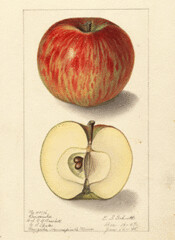
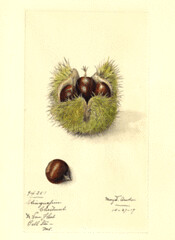
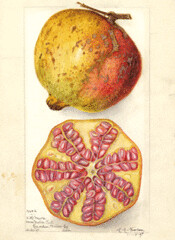
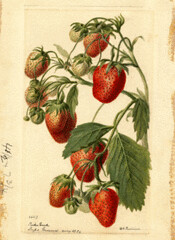
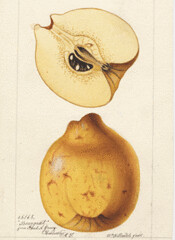



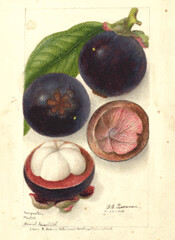
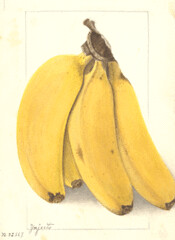

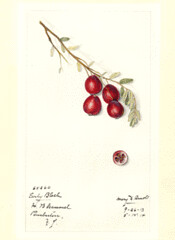
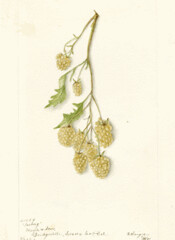
7 Comments:
Is California different in this respect? Apples are regularly advertised with their cultivar names, which leads me to believe that folks around here know the difference. And Gala seems to be a known 'brand' cultivar.
However, one hardly ever sees peaches or other stone fruits identified with a cultivar name in grocery store adds or displays.
Maybe I was a little unclear on this aspect. This is exactly the situation here: Apples are regularly advertised by cultivar name, including 'Gala'. Virtually all other fruits however, are not identified by cultivar, and are designated at most by things like 'red' or 'seedless'.
What I was suggesting was that A) other crops should create publically known identities for cultivars, and B) more apple cultivars need to weasel their way into public consciousness. My comment on 'Gravenstein' was based relates to the efforts of a subset of California growers to create an identity for that cultivar, which, from the sounds of it, they've been moderately successful at. (The Sebestapol reference was from memory...I may be wrong about where it was.)
You have very good thoughts I am happy to read your message. amazing !!
suman
free satellite tv
louis vuitton handbags
adidas superstar
adidas wings
oakley vault
michael kors outlet
nike huarache
fitflop sandals
polo outlet
oakley sunglasses
michael kors outlet clearance
coach outlet store online clearances
concord 11
cheap jordans
adidas boost
true religion outlet
coach outlet online
nike outlet
jordan retro 13
true religion jeans
gucci handbags
coach outlet
cheap toms
air jordan 8
beats by dr dre
copy watches
replica watches
burberry handbags
coach outlet clearance
christian louboutin sale
chenyingying2016726
شیشه رنگی تترافرم پیشگام در تولید شیشه رنگی دکوراتیو واردات- تولید- فروش -اجرای شیشه های لاکوبل رنگی-متلوکس-متلاک در 40 رنگ آینه های رنگی در 6رنگ
monada-iau-ac-ir
به اطلاع کلیه متقاضیان محترم می رسانیم مطابق آیین نامه نقل و انتقالات دانشگاه آزاد کلیه دانشجویان گرامی مجاز به ثبت نام نقل و انتقالات دانشگاه آزاد اسلامی چه به صورت انتقال کامل چه به صورت مهمانی از طریق سامانه منادا نمی باشند
dipcode-medu-ir
به اطلاع کلیه متقاضیان شرکت در کنکور سراسری می رساند که زمان ثبت نام کنکور سراسری از اول بهمن ماه می باشد و کلیه داوطلبان ثبت نام کنکور سراسری موظف به دریافت کد سوابق پیش دانشگاهی و یا کد سوابق دیپلم می باشند
azmoon-medu-ir
ثبت نام آزمون تیزهوشان سمپاد همه ساله به منظور شناخت دانش آموزان مستعد برگزار می شود . ثبت نام در مدارس تیزهوشان سمپاد مستلزم شرکت در آزمون ورودی مدارس تیزهوشان می باشد. دانش آموزانی که قصد ورود به مدارس تیزهوشان یا مدارس استعداد درخشان سمپاد را دارند می بایست ابتدا شرایط ثبت نام در آزمون تیزهوشان را داشته باشند تا بتوانند در آزمون شرکت کنند.
azmoon-org
گاه آزاد سراسر کشور می رساند به منظور تسهیل در روند ثبت نام داوطلبان کلیه امور ثبت نام به صورت الکترونیکی بوده و صرفا از طریق سامانه azmoon.org انجام خواهد گرفت و نیاز به مراجعه حضوری به هیچ یک از مراکز دانشگاه آزاد نخواهد بود.
azmoon-net
ضمن آرزوی موفقیت برای تمامی دانشجویان و داوطلبان ورود به دانشگاه آزاد به اطلاع می رسانیم سیستم اعلام نتایج دانشگاه آزاد اسلامی به نشانی azmoon.net در راستای تسهیل امور دانشجویی داوطلبان در اختیار شما دانشجویان محترم قرار دارد لذا کلیه دانشجویان گرامی و داوطلبانی که در آزمون ها شرکت نموده اند یا قصد ثبت نام بدون کنکور دانشگاه آزاد را دارند می توانند جهت اطلاع از نتایج آزمون و دریافت کارنامه آزمون های مختلف از طریق سامانه اقدام نمایند
آموزش طراحی سایت فروشگاهی
ویژگی های سایت فروشگاه اینترنتی
فاوت سایت داینامیک و استاتیک
طراحی سایت خبری
طراحی سایت خبری با php
طراحی سایت شرکتی
تکنیک طراحی سایت intrinsic
آموزش طراحی سایت
افزونه های وردپرس انتخاب شرکت طراحی سایت خوب
Post a Comment
<< Home